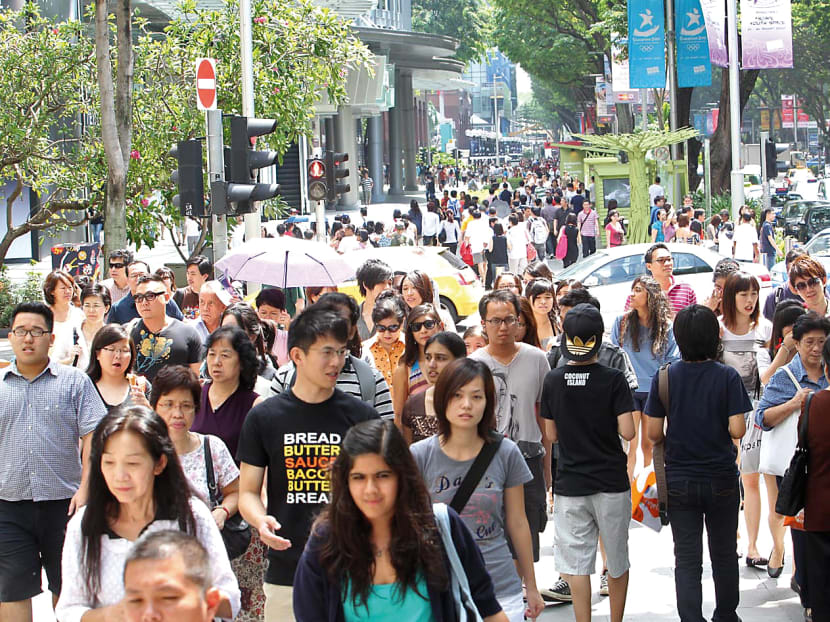S’pore consumer prices see steepest decline since 1986
SINGAPORE — Consumer prices fell for the 19th consecutive month in May while also recording the steepest decline since August 1986, dragged down by an ongoing fall in private road transport and accommodation costs.
SINGAPORE — Consumer prices fell for the 19th consecutive month in May while also recording the steepest decline since August 1986, dragged down by an ongoing fall in private road transport and accommodation costs. Disinflationary pressures are not likely to dissipate in the near term but could see some easing, economists say, mainly due to the revisions of some government policy measures.
The All-Items Consumer Price Index (CPI) fell 1.6 per cent year-on-year last month, extending from the 0.5 per cent decline in April, showed data from the Monetary Authority of Singapore (MAS) and the Ministry of Trade and Industry (MTI) on Thursday (June 23). Analysts in a Reuters poll had expected a 0.8 per cent decline.
“Singapore’s headline prices had been contracting for 19 consecutive months, the longest on record ... However, we hesitate to label the current situation as a ‘deflationary spiral’, as the decline in prices were largely due to administrative measures applied on accommodation and private road transport costs,” noted United Overseas Bank (UOB) economist Francis Tan.
Last month, accommodation costs fell by 6 per cent, compared with the 0.9 per cent drop in the previous month, as the cost of housing maintenance and repairs declined sharply.
This was mainly because of base effects associated with the differing schedule in the Service & Conservancy Charges (S&CC) rebates, which were disbursed to households in April last year and May this year. As such, the negative contribution from the S&CC rebates in May should be reversed in June.
Meanwhile, private road transport costs fell 7.6 per cent, extending from the 7.1 per cent decline in April, mainly because of a larger decline in petrol pump prices, reflecting the relatively high base in May last year.
Said UOB’s Mr Tan: “The recent adjustment of loan limits for cars by the MAS and the latest announcement of revision of public car park prices could see some easing in the contraction in the headline number.”
Dr Tan Khay Boon, senior lecturer at SIM Global Education, agreed: “In the next period, headline inflation may edge upwards as transport costs are likely to increase due to higher COE prices arising out of the liberalisation of car-loan rules.”
OCBC head of treasury research and strategy Selena Ling added: “While COE premiums appear to have bottomed around February and had climbed after the recent easing of auto loan measures, they are still currently below the 2H15 (second half of 2015) average.”
She added: “Crude oil prices are also currently hovering just under the US$50 (S$67) per barrel handle, which are close to the 2H15 average. We do not anticipate that the disinflationary pressures will dissipate significantly for the headline inflation prints in the coming months.”
MAS Core Inflation, which excludes the cost of accommodation and private road transport, rose to 1 per cent in May from 0.8 per cent in the previous month, a 14-month high. This is mainly due to a jump in services inflation to 1.5 per cent from 0.7 per cent earlier.
“In the current period of slower economic growth, Singapore’s core inflation had not contracted at all, and has been trending higher over the past few months,” said UOB’s Mr Tan.
“This may add to some pressure for the central bank to rethink the current policy stance of a zero appreciation S$NEER (Singapore dollar nominal effective exchange rate) slope in their next meeting in October, although we think that the MAS will adopt a wait-and-see approach and not act until the inflation picture gets clearer before their April 2017 meeting.”
The MAS and MTI have maintained headline inflation and core inflation forecasts. Headline inflation is expected to average at minus 1 per cent to 0 per cent for the whole year and core inflation to be in the lower half of the 0.5 per cent to 1.5 per cent forecast range, barring a sharp rise in global oil prices.







